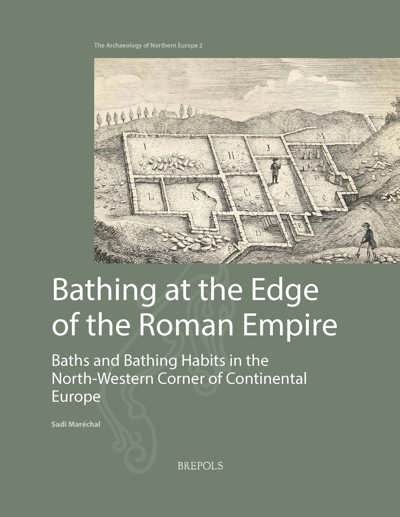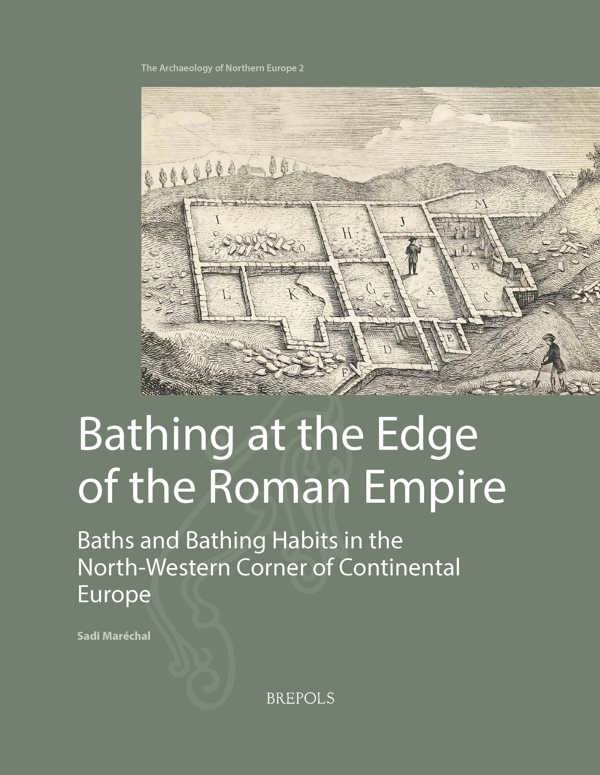
Bathing at the Edge of the Roman Empire
Baths and Bathing Habits in the North-Western Corner of Continental Europe
Sadi Maréchal
- Pages: 304 p.
- Size:216 x 280 mm
- Illustrations:229 b/w, 13 col., 13 tables b/w., 8 maps color
- Language(s):English
- Publication Year:2023
- € 90,00 EXCL. VAT RETAIL PRICE
- ISBN: 978-2-503-60066-6
- Paperback
- Available
- € 90,00 EXCL. VAT RETAIL PRICE
- ISBN: 978-2-503-60067-3
- E-book
- Available
“The book is well written and engaging. The presentation is well thought through, and the concise but consistent information and clear plans make it easy to access, compare and study the material. It succeeds in delivering a thorough material study and combines this within a deeper investigation of Roman society in a far corner of the empire.” (Marion Uckelmann, in Antiquity, 97, 2023)
"In the end the book is well written and genuinely enjoyable to read. There are few typographical errors, and the volume is packed with interesting information. As such the book is useful both in order to provide an overview of Roman bathing habits in a concise form, as well as for the specific area in focus. The catalogue ensures that it will be useful, if not critical, for all scholars studying Roman baths, in particularly in the northern parts of the Empire." (Patrik Klingborg, in Opuscula, 17, 2024, p. 270)
"Mit dieser Arbeit ist es Maréchal gelungen, ein Grundlagenwerk zu den römischen Badeanlagen des kontinentalen Nordwestens zu schaffen, welches sich als Ausgangspunkt für weiterführende Untersuchungen anbietet und diesen bislang eher unbekannten Bestand an Thermenbauten für ein breiteres Fachpublikum erschließt." (Thomas Heide, in Germania, 101, 2023, p. 315)
Sadi Maréchal, PhD (2016), Ghent University, is a postdoctoral researcher of the Research Foundation Flanders (FWO). His research interests include Roman architecture, private and public space and urban topography, with a specific interest in Roman baths and bathing habits
Roman bathhouses are considered to be prime markers when studying romanization in the provinces of the Empire, as these very specific — and archaeologically recognizable — buildings, together with their associated ideas about the body and personal health, introduced a decidedly Roman habit into regions that had hitherto been unfamiliar with (communal) bathhouses and heating technology. While traditionally, studies into Roman baths and bathing have focused on large public baths in the cities of the empire, however, those from the area that now roughly corresponds to modern-day Belgium have often been neglected in recent research as this was an area with few important urban centres.
This book for the first time investigates the introduction, spread, and eventual disappearance of Roman-style baths and of bathing habits in this north-western corner of the Roman Empire. A detailed analysis of the architecture, technology, and decoration of both public and private baths is combined with a discussion on the role of bathing in the area’s romanization, and supplemented by a fully illustrated catalogue of all bathhouses in the area of study. In doing so, the volume sheds new light not only on the evolution of baths and bathing in this region, but also on their broader role in larger historic processes such as cultural change across the Empire.
List of Illustrations
Key to All Plans
Preface
Introduction
Chapter 1
Communal Baths — a Roman Phenomenon?
Chapter 2
Earlier Research on Roman Bathing in the North-West
Chapter 3
The Roman Continental North-West, a Blank Spot for Baths?
Chapter 4
The Architecture of the Baths
Chapter 5
Technology of the Baths
Chapter 6
Building Material and Decoration
Chapter 7
Bathing and Society
Conclusions
Catalogue
Appendices
Works Cited
Index




